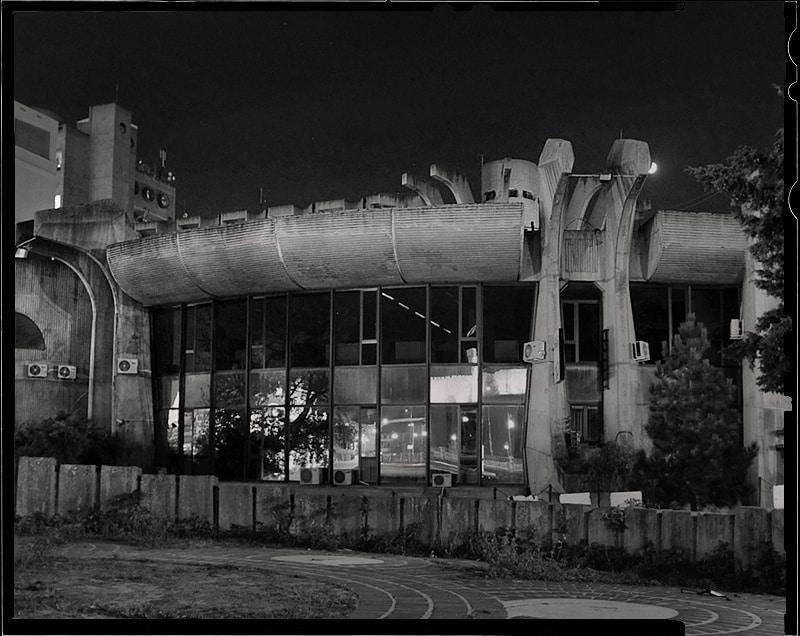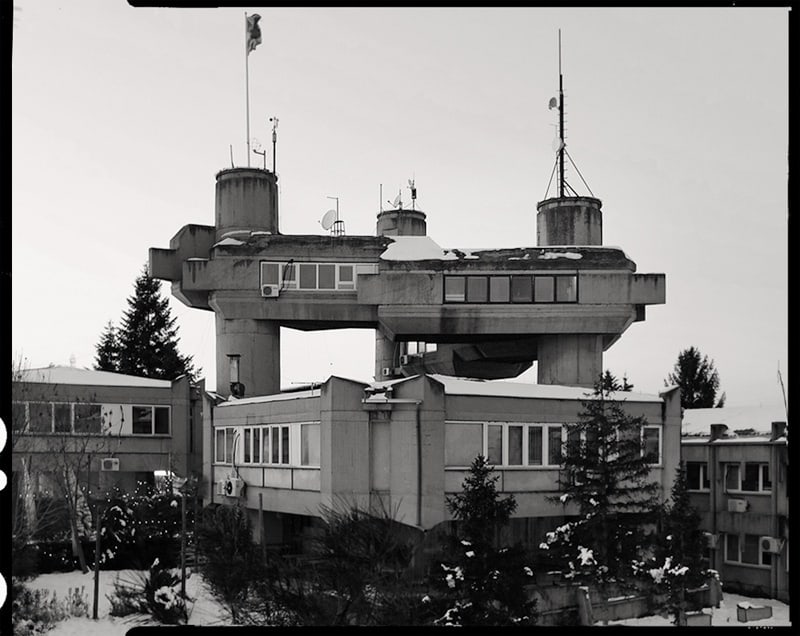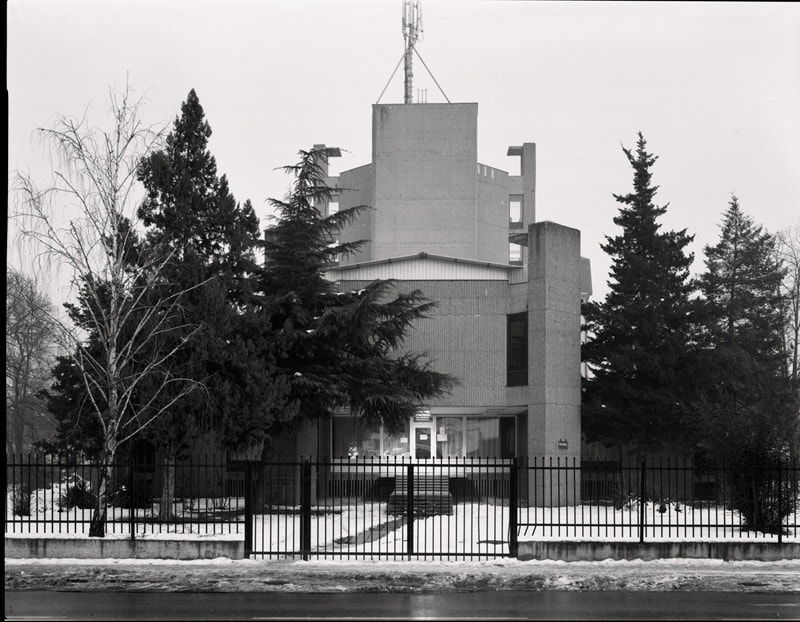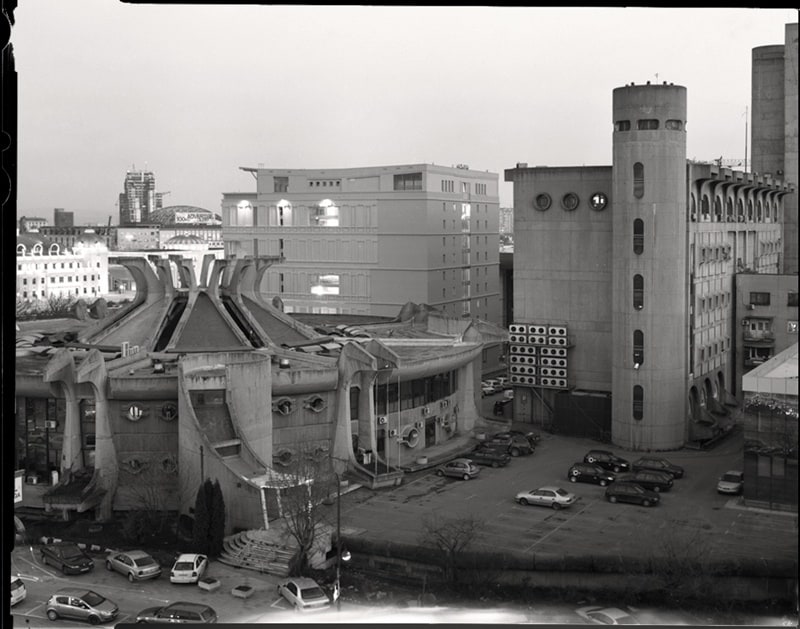“In a vain attempt, I tried to convince him of the artistic value of silence. I put forward a merciless argument that the aesthetics of noise prevails all. You see Naples, Vesuvius never sleeps. No one will hear the rumble of an underground thunder preceding disaster if it strikes someday. Think about what happened in Pompeii. Naturally, I don’t mean you should emulate its dead silence – that would be an overstatement. Just listen to Pericles and exercise some restraint.”
Zbigniew Herbert, Barbarzyńca w ogrodzie (“Barbarian in the Garden”), Zeszyty Literackie, Warsaw 2004, p. 22.
The Balkans in Southern Europe…
…is where you can observe the clash between the past and the present, the clashes between cultures, religions and worldviews stirred into the melting pot of communism. Uniting closely-knit communities of people is challenging and unruly work. “You see Skopje, nature never sleeps. No one will hear the rumble of an underground thunder preceding disaster if it strikes someday. Think about what happened in Pompeii (…) Listen to Pericles and exercise some restraint.”

Michał Korta, Central Post Office in Skopje, 2014 © the artist
About 50 years ago a force of nature struck once again without warning, changing the landscape of the Macedonian capital forever.
The solid form of the building pictured is bathed in bright light and dispersed with varying shades of grey. Its futuristic design, which bears a certain resemblance to Le Corbusier’s style, seems as if it were taken directly out of a science-fiction film. The ragged, geometric shapes of roofs, buttresses and stairways noticeably extend and modify the centre of the structure. The rawness of the material, its sharp edges and timeless nature is enhanced by the large format black and white negatives, which resemble sketches made by 19th century French architects or Oskar Hansen’s visionary projects. Skopje’s tragic fate is reflected in such an architectural landmark. In 1963 a massive earthquake hit Skopje, almost wiping out the entire city and its buildings. The earthquake left more than thousands of people homeless and caused over a thousand casualties. During the reconstruction process, the Manager of the UN Skopje Urban Plan Project title was given to Adolf Ciborowski, the main architect and urban planner working on the post-war reconstruction of Warsaw. Stanisław Jankowski “Agaton”, another great figure in the history of Warsaw, managed the engineers of the official Polish construction agency Polservice. Polish workers also cleared the city of debris. In January 1966 the Polish Architects’ Association announced the Public Competition for the Design of the Museum of Contemporary Art in Skopje”. There were 89 competing designs, with results announced in May. Design No.16 created by the “Tigers” (Wacław Kłyszewski, Jerzy Mokrzyński, Eugeniusz Wierzbicki) won.
However now that is all in the past. Consequent generations continue to settle in the restored city. We have also entered a new phase of geopolitics. Michał Korta captures this precise mood in his photographs. It’s just the calm before the storm. Change is coming, however this time around, it is brought about by humans instead of nature. The architecture of the 60s and 70s is fading away. Series of photographs depict brutalist buildings in competition with car parks, advertisements, and modern buildings constructed in a supposedly neo-baroque style, which represent the power and wealth of Macedonia. Distracting billboards and neon signs mask anything that attempts to defy the widely accepted direction of development.
However the massive concrete monuments of the past photographed by Korta, which against a black and white backdrop echo geometric tombstones made of reinforced concrete, symbolise a period of time that has already passed. Today, they are a shameful memory, however they are also a unique symbol of the city. Solid construction stands in conflict with nature. Brutalist architecture dominates the photographs. Grey concrete stands in contrast to the black form with sculptural reliefs. The artist is looking for the visually attractive prospects as if he wanted to return the dignity that they were once deprived of. He transforms buildings into the Doric temples, places of worship denoting the superiority of humans.
How much does this tell us about the time they were created? How much does this tell about the position of men and architecture in the surrounding world? Korta manages to capture the mood. He expresses something inexpressible. Perhaps it is precisely what the current generation wants to cover up in order to change the image of the capital. Instead of highlighting Skopje’s turbulent times or political and financial dependence, they hung countless billboards demonstrating a prosperous, consumerist society. Neo-baroque buildings and myriad monuments themselves are supposed to convey the country’s stability and wealth. History is obliterated. The black and white photographs reference the past whilst hinting at the post-apocalyptic landscape of Skopje.

Michał Korta, Central Post Office in Skopje, 2014 © the artist

Michał Korta, The Ss. Cyril and Methodius University in Skopje, 2014 © the artist

Michał Korta, Meteorogical Center in Skopje, 2014 © the artist

Michał Korta, Archive in Skopje, 2014 © the artist

Michał Korta, Dormitory in Skopje, 2014 © the artist
However series of photographs about architecture are not the artist’s main interest. In the situation he found himself in, Korta shot the buildings instinctively. An involuntary reflex of a documentary photographer prompted his journey that revived the past and saved it from oblivion. Like Kerouac, Korta went spontaneously on the road and ended up in the Balkans. The main purpose of the trip was the photography project illustrating the Balkans of today. His “Balkan Playground” project explores Balkan identity. It certainly does not recall the magical landscapes one sees in travel agency brochures advertising a trip to Dalmatia. Korta perceives the Balkans as the place where time has stopped. One cannot really pinpoint neither the time nor space in which the picture was taken. Modernity and the Soviet Union seem to be merging. Pristine landscapes and young women wearing summer dresses are coupled with derelict buildings, elderly people sitting by the front door of their houses as if they were protecting tradition, men dressed in military clothing resembling post-apocalyptic troops, and African cliques fighting over some overgrown basketball courts, over their right to the future. The future we see is geared towards the West, however it is still deeply hampered by tradition, history, and people’s mentality. Every individual frame portrays the complexity and ambiguity of the contemporary Balkans. You may view the photographs either as images of a constantly evolving society, or as a testament to the past, something that should have already faded away, as it does not fit well with the modern image of the country. You may also treat these images as a reminder that one should move forward while respecting tradition. What does Michał Korta think? He believes these pictures record the few months he spent travelling across the Balkans – a metaphorical journey to find himself, to go back.

Michał Korta, Balkan Playground, 2014 © the artist
‘The greatest ride in my life was about to come up…’
On the Road – Jack Kerouac

Michał Korta, Central Post Office in Skopje, 2014 © the artist







